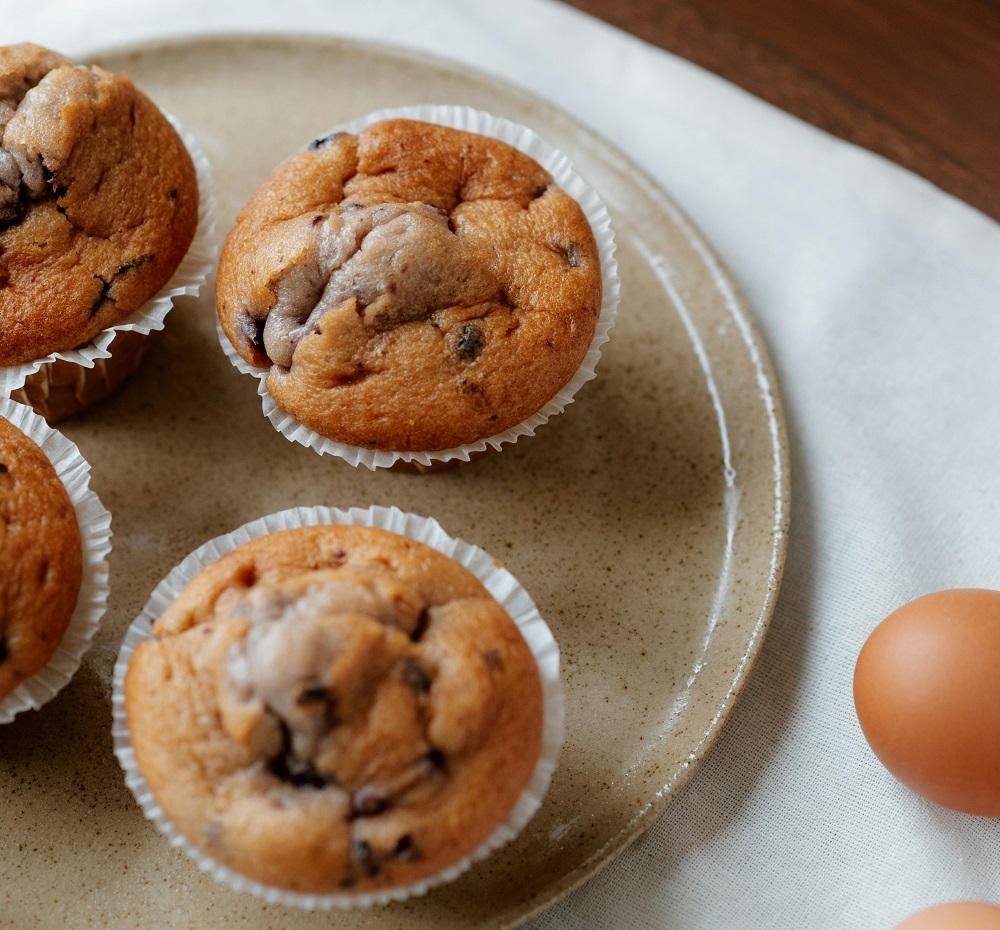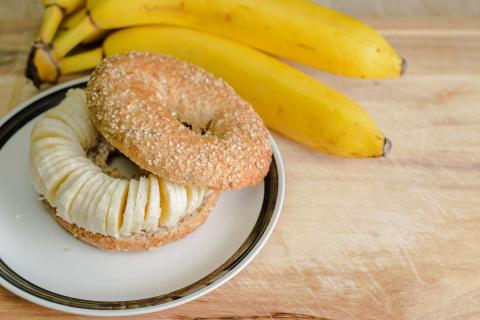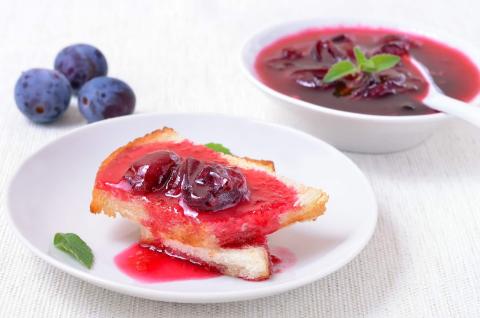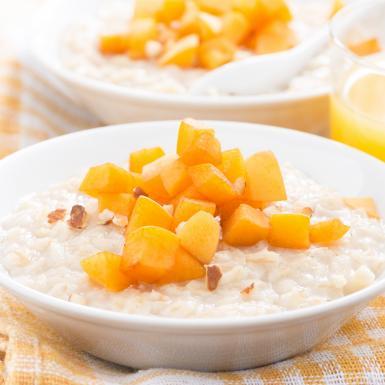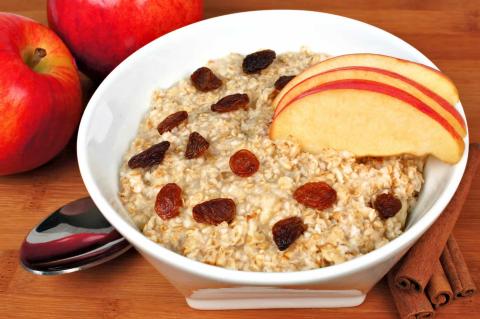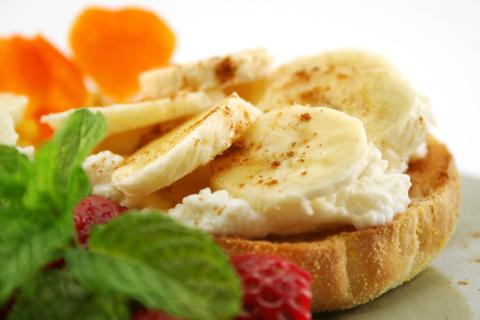- 1 Teaspoon (3g) Vegetable Oil
- 38 (Thawed) (150g) Frozen Pitted Cherries
- 3 (Very Ripe) (300g) Bananas
- ½ Teaspoon (3ml) Vanilla Extract
- 5 (Medium Sized) (250g) Eggs
Ingredients
Allergy Disclaimer
Always check the label of each ingredient for allergy warnings.
Method
- Preheat the oven to190°C / 170°C fan oven / 375°F / gas mark 5. Pour oil into one section of the muffin tray, then using fingers or kitchen roll coat each cup.
- Cut the cherries in half then place on a double layer of kitchen roll on a plate to dry while preparing the other ingredients.
- Peel the bananas and place in a large bowl. Mash thoroughly using a fork. Add the vanilla extract and mix in.
- Crack the eggs into the bowl and whisk togerther until well beaten.
- Divide the cherries evenly amoung the muffin cups, then pour in the banana mix until each cup 3/4 full.
- Bake in the oven until set and a dome has formed, approximately 12-14 minutes.
- Remove from oven and run a knife around the edge of each muffin and remove them from the tin. Allow to cool slightly before serving.
Time Saver Tips
Defrost the cherries overnight.
Cost Saver Tips
Great use of overripe bananas.
Tips for Kids
They'll enjoy the mashing and mixing.
Nutritional Information
Based on a single serving of 53g (% of an adult's reference intake)
Energy
53 kcals ( 3 %)
238 kJ ( 3 %)
Fat
0.5 g ( 3 %)
Saturates
6.6 g ( %)
Sugar
6 g ( 7 %)
Salt
0.1 g ( 2 %)
Detailed nutritional information
| Per 100g | Per 53g serving | |
|---|---|---|
| Energy Kcals | 107 | 53 |
| Energy Kj | 449 | 238 |
| Protein | 449 g | 238 g |
| Total Fat | g | g |
| Saturated Fat | 1 g | 0.5 g |
| Carbohydrates | 12.4 g | 6.6 g |
| Total Sugars | 11.3 g | 6 g |
| NSP Fibre | 0.6 g | 0.3 g |
| Sodium | 61 mg | 32 mg |
| Salt | 0.2 g | 0.1 g |
Find out about nutritional labelling
Nutrition labels on the front of packaging
- Most of the big supermarkets and many food manufacturers display nutritional information on the front of pre-packed food.
- Front of pack nutrition labels provide information on the number of grams of fat, saturated fat, sugars and salt and the amount of energy (in kJ and kcal) in a serving or portion of a recipe.
- The labels also include information about reference intakes (expressed as a percentage) which are guidelines about the approximate amount of particular nutrients and energy required for a healthy diet.
- The colour coding tells you at a glance if the food has high (red), medium (amber) or low (green) amounts of fat, saturated fat, sugars and salt.
- The more greens on the label, the healthier the choice
- Amber means neither high nor low, so you can eat foods with all or mostly ambers on the label most of the time.
- Reds on the label means the food is high in that nutrient and these are the foods we should cut down on. Try to eat these foods less often and in small amounts.
Food shopping tips
If you’re trying to decide which product to choose, check to see if there's a nutrition label on the front of the pack. This will help you to quickly assess how your choices stack up. You will often find a mixture of red, amber and green colour coding for the nutrients. So when you're choosing between similar products, try to go for more greens and ambers and fewer reds if you want to make a healthier choice.
 Activities & Play
Activities & Play Behaviour
Behaviour Childcare
Childcare Development & Growing Up
Development & Growing Up Family, Friends & Relationships
Family, Friends & Relationships Feeding Your Baby
Feeding Your Baby Food & Eating
Food & Eating Health & Safety
Health & Safety Mental Health & Wellbeing
Mental Health & Wellbeing Money & Work
Money & Work Online Behaviour & Safety
Online Behaviour & Safety Pregnancy & First Days
Pregnancy & First Days School & Education
School & Education Sleep
Sleep

